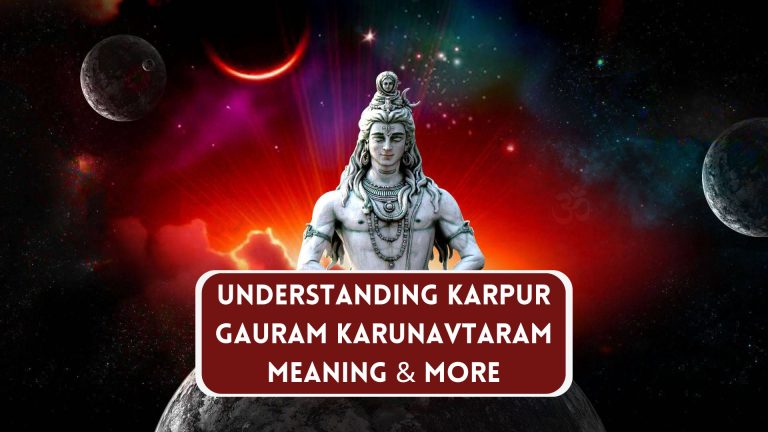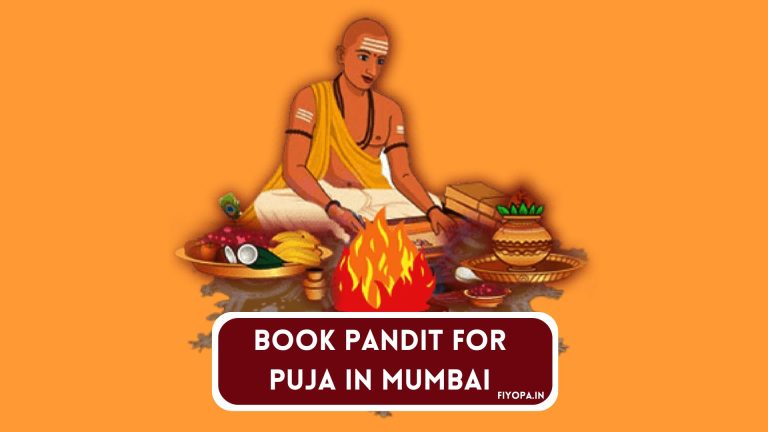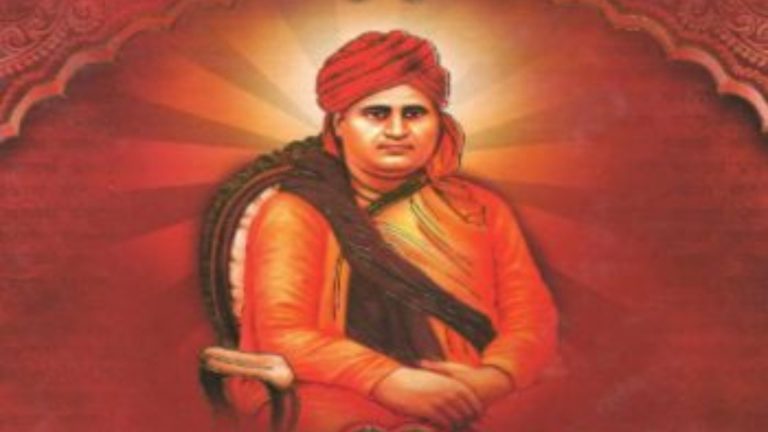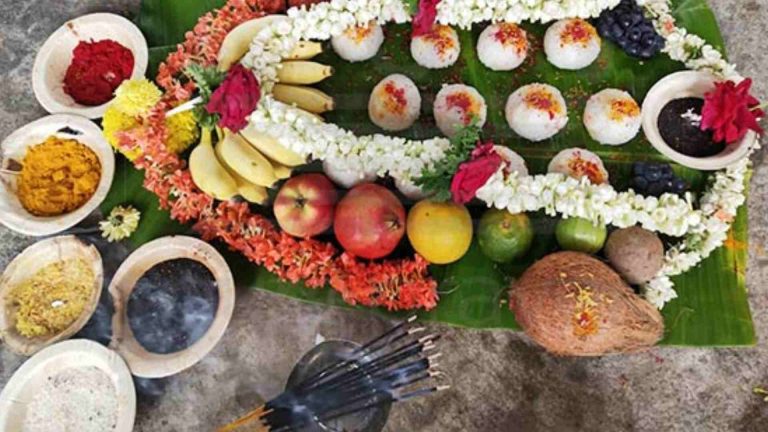Sataisa Puja/Gand Mool Nakshatra Shanti Puja 2024
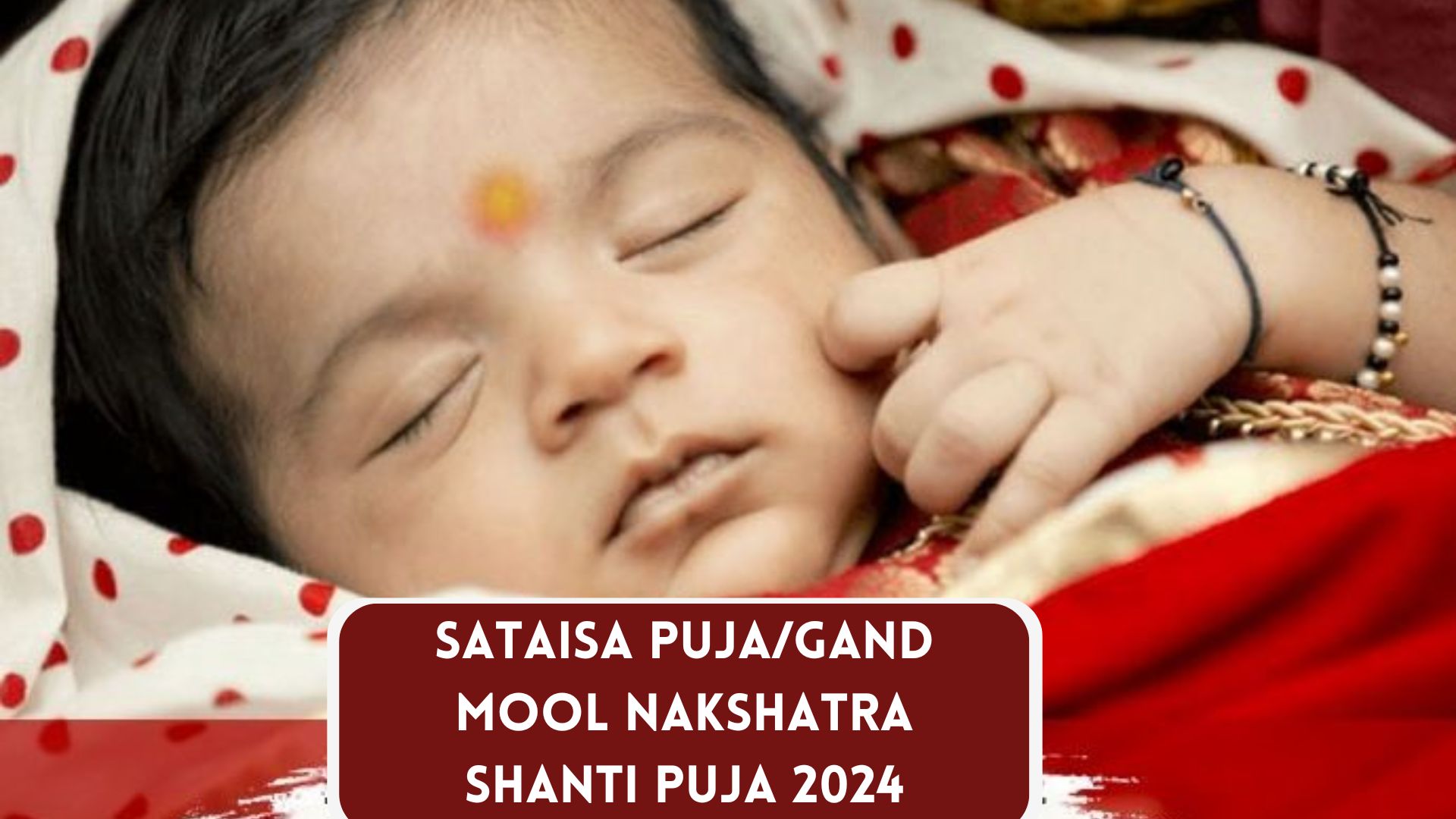
Sataisa Puja, also known as Gand Mool Nakshatra Shanti Puja, is a significant ritual performed for individuals born under specific nakshatras believed to be inauspicious. The puja aims to pacify potential negative effects and bring blessings to the individual and their family through the worship of deities like Lord Ganesha, Goddess Lakshmi, and the nine grahas.
What is Sataisa Puja/Gand Mool Nakshatra Shanti Puja?
Sataisa Puja, also known as Gand Mool Nakshatra Shanti Puja, is a Hindu ritual performed to address the effects of the Gand Mool Nakshatra, which is considered inauspicious in Vedic astrology for activities such as childbirth, starting new ventures, or important ceremonies.
The Sataisa Puja/Gand Mool Nakshatra Shanti Puja is a traditional ritual performed to seek blessings for protection and prosperity, involving prayers, offerings, and rituals conducted by a qualified priest or astrologer to pacify the malefic influence of the Gand Mool Nakshatras and ensure favorable outcomes.
The rituals and procedures of the puja may vary based on regional customs, family traditions, and astrological assessments. It is advisable to seek guidance from a knowledgeable astrologer or priest to determine the suitable timing and practices for performing the Sataisa Puja/Gand Mool Nakshatra Shanti Puja.
The puja is conducted to harmonize energies related to the Gand Mool Nakshatras and to seek divine protection and blessings for individuals and their families.
Preparation for Sataisa Puja/Gand Mool Nakshatra Shanti Puja
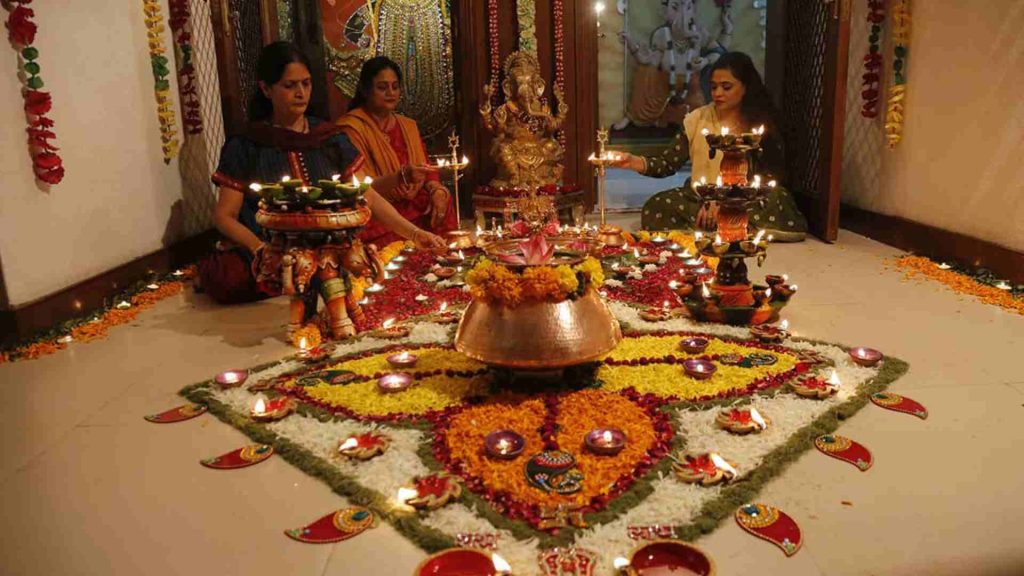
The Sataisa Puja, also known as the Gand Mool Nakshatra Shanti Puja, is a Vedic ritual designed to alleviate potential negative influences associated with certain nakshatras in Vedic astrology. Adequate preparation is essential for a successful puja experience. Here is a detailed guide to help you prepare for the Sataisa Puja:
1. Consult a Pandit or Astrologer:
It is recommended to consult a knowledgeable pandit or astrologer before beginning the puja preparations. They can confirm the necessity of the Sataisa Puja based on your birth nakshatra and guide the specific rituals and timings involved.
2. Determine the Puja Date and Time:
The puja is typically performed during an auspicious time, determined by the pandit based on birth details and astrological calculations. The muhurta (auspicious time) is important for the puja’s effectiveness.
3. Gather Puja Materials:
The pandit will provide a list of necessary puja items, including:
- Murtis (idols) of Lord Ganesha, the nakshatra deity, and the nine grahas (planets)
- Flowers, fruits, and incense
- Sacred water (ganga jal)
- Betel leaves, areca nuts, and cloves
- Camphor
- Ghee (clarified butter)
- Honey
- Sugar
- Rice
- Coins
- A sacred thread (yajnopavitam)
- A new cloth for the idol
- A small earthen pot (kalash)
4. Prepare the Puja Area:
Select a peaceful and tidy location for the puja. Make sure the space is organized and free of disturbances. Purify the puja area with water and burn incense for a reverential ambiance.
5. Set Up the Puja Altar:
Put the puja items on a clean altar or table. Ensure that the murtis are facing east. Place flowers, fruits, and incense in front of the murtis. Light a lamp or diya to brighten the altar.
6. Attire for the Puja:
When attending the puja, it is recommended to wear clean, simple, and comfortable clothing in light colors. It is best to avoid heavy jewelry and makeup.
7. Prepare Yourself Mentally:
Before the puja, it is recommended to approach it with a pure mind, bathe to cleanse your body, set clear intentions, and pray with devotion.
8. Seek Guidance During the Puja:
It is important to carefully follow the instructions provided by the pandit when conducting a puja yourself. If you have hired a pandit to conduct the puja, ask any questions you may have beforehand.
9. Maintain a Devotional Attitude:
During the puja, it is important to maintain a respectful and devotional attitude. Chant mantras with focus and attention, and avoid multitasking or engaging in unrelated activities during the ceremony.
10. Conclude with Gratitude:
Following the puja, show appreciation to the deities for their blessings and provide prasad to family and friends to share the positive energy and blessings from the puja.
The Sataisa Puja is a personal spiritual practice that can offer profound benefits when approached with sincerity, devotion, and a pure heart.
How to Perform Sataisa Puja/Gand Mool Nakshatra Shanti Puja?
It is advisable to conduct the Sataisa Puja with the guidance of an experienced pandit or Vedic priest to ensure it is performed correctly and by Vedic traditions. Personalized guidance may also be provided based on individual circumstances and nakshatra:
Preparation:
- Consult a Pandit: Consult with a pandit or astrologer to seek advice on the necessity of the puja and to choose an auspicious date and time for the ceremony..
- Gather Puja Materials: The necessary puja items often include murtis (idols), flowers, fruits, incense, sacred water (ganga jal), betel leaves, areca nuts, cloves, camphor, ghee, honey, sugar, rice, coins, a sacred thread (yajnopavitam), a new cloth for the idol, and a small earthen pot (kalash), following the pandit’s instructions.
- Prepare the Puja Area: Select a peaceful and clean location for the puja, making sure it is free of clutter and disturbances. Purify the space with water and incense to establish a tranquil environment.
- Set Up the Puja Altar: Place the puja items on a clean altar or table. Ensure the murtis are facing east. Decorate the altar with flowers, fruits, and incense. Light a lamp or diya to illuminate the altar.
- Attire for the Puja: Wear clean and preferably new clothes in light colors. Avoid heavy jewelry or makeup.
Puja Rituals:
- Ganapati Puja: The puja begins with the worship of Lord Ganesha, seeking divine blessings for its smooth conduct. Prayers are offered, mantras are chanted, and abhishek is performed on the Ganesha murti.
- Nakshatra Puja: Connect with the deity associated with your birth nakshatra by offering prayers, chanting mantras, and performing abhishek to seek their protection and blessings.
- Graha Puja: Follow practices like praying, chanting mantras, and performing rituals to honor and balance the energies of the nine planets and counteract any negative influences.
- Abhishek: Performing abhishek to the murtis of Lord Ganesha, the nakshatra deity, and the grahas involves using sacred water, milk, honey, ghee, and other sacred substances.
- Havana: Perform a sacred fire ritual (Havana) by offering oblations (ahuti) of ghee, grains, and other sacred substances into the fire. Chant mantras and prayers during the ritual to seek blessings and purification.
- Aarti: Perform aarti (ceremonial worship with flame) to the murtis, using a lighted lamp or diya. Sing aarti hymns and express devotion and gratitude to the deities.
- Prasad Distribution: Distribute the sanctified offerings (prasad) among the participants as a symbol of divine grace and blessings.
Sataisa Puja is a sacred spiritual ritual that aims to harmonize one’s life with cosmic energies and seek divine blessings for overall well-being. Approach the puja with sincerity, devotion, and a pure heart to experience its profound benefits.
2024 Mool Nakshatra Date & Time
| January 2024 | |||||
| Start On | End On | ||||
| Day | Date | Time | Day | Date | Time |
| Friday | 30 Dec | 11:24 AM | Sunday | 1 Jan | 12:48 PM |
| Monday | 9 Jan | 06:05 AM | Wednesday | 11 Jan | 11:50 AM |
| Wednesday | 18 Jan | 05:23 AM | Friday | 20 Jan | 12:40 PM |
| Thursday | 26 Jan | 06:57 AM | Saturday | 28 Jan | 07:06 PM |
| February 2024 | |||||
| Start On | End On | ||||
| Day | Date | Time | Day | Date | Time |
| Sunday | 5 Feb | 12:13 AM | Tuesday | 7 Feb | 05:45 PM |
| Wednesday | 15 Feb | 02:02 AM | Thursday | 16 Feb | 10:53 PM |
| Thursday | 23 Feb | 04:50 AM | Saturday | 23 Feb | 03:27 AM |
| March 2024 | |||||
| Start On | End On | ||||
| Day | Date | Time | Day | Date | Time |
| Saturday | 4 Mar | 06:41 PM | Tuesday | 7 Mar | 12:05 AM |
| Tuesday | 14 Mar | 08:13 AM | Thursday | 16 Mar | 06:24 AM |
| Wednesday | 22 Mar | 03:32 PM | Friday | 24 Mar | 01:22 PM |
| April 2024 | |||||
| Start On | End On | ||||
| Day | Date | Time | Day | Date | Time |
| Saturday | 1 Apr | 01:57 AM | Monday | 3 Apr | 07:24 AM |
| Monday | 10 Apr | 01:39 PM | Wednesday | 12 Apr | 11:59 AM |
| Wednesday | 19 Apr | 01:01 AM | Thursday | 20 Apr | 11:11 PM |
| Friday | 28 Apr | 09:53 AM | Sunday | 30 Apr | 03:30 PM |
| May 2024 | |||||
| Start On | End On | ||||
| Day | Date | Time | Day | Date | Time |
| Sunday | 7 May | 08:21 PM | Tuesday | 9 May | 05:45 PM |
| Tuesday | 16 May | 08:15 AM | Thursday | 18 May | 07:22 AM |
| Thursday | 25 May | 15:54 PM | Saturday | 27 May | 11:43 PM |
| June 2024 | |||||
| Start On | End On | ||||
| Day | Date | Time | Day | Date | Time |
| Sunday | 4 June | 05:03 AM | Tuesday | 6 June | 01:23 AM |
| Monday | 12 June | 01:49 AM | Wednesday | 14 June | 01:40 PM |
| Thursday | 22 June | 01:21 PM | Saturday | 24 June | 07:19 AM |
| July 2024 | |||||
| Start On | End On | ||||
| Day | Date | Time | Day | Date | Time |
| Saturday | 1 July | 03:04 PM | Monday | 3 July | 11:02 AM |
| Sunday | 9 July | 07:29 PM | Tuesday | 11 July | 07:04 PM |
| Wednesday | 19 July | 07:58 AM | Friday | 21 July | 01:58 PM |
| Saturday | 29 July | 12:55 AM | Sunday | 30 July | 09:32 PM |
| August 2024 | |||||
| Start On | End On | ||||
| Day | Date | Time | Day | Date | Time |
| Sunday | 6 Aug | 02:54 AM | Tuesday | 8 Aug | 01:16 AM |
| Tuesday | 15 Aug | 01:59 PM | Thursday | 17 Aug | 07:58 PM |
| Friday | 25 Aug | 09:14 AM | Sunday | 27 Aug | 07:16 AM |
| September 2024 | |||||
| Start On | End On | ||||
| Day | Date | Time | Day | Date | Time |
| Saturday | 2 Sept | 12:30 PM | Monday | 4 Sept | 09:26 AM |
| Monday | 11 Sept | 08:01 PM | Thursday | 14 Sept | 02:01 AM |
| Thursday | 21 Sept | 03:35 PM | Saturday | 23 Sept | 02:56 PM |
| Friday | 29 Sept | 11:18 PM | Sunday | 1 Oct | 07:27 PM |
| October 2024 | |||||
| Start On | End On | ||||
| Day | Date | Time | Day | Date | Time |
| Friday | 29 Sept | 11:18 PM | Sunday | 1 Oct | 07:27 PM |
| Monday | 9 Oct | 02:45 AM | Wednesday | 11 Oct | 08:45 AM |
| Wednesday | 18 Oct | 09:01 PM | Friday | 20 Oct | 08:41 PM |
| Friday | 27 Oct | 09:25 AM | Sunday | 29 Oct | 05:54 PM |
| November 2024 | |||||
| Start On | End On | ||||
| Day | Date | Time | Day | Date | Time |
| Sunday | 5 Nov | 10:29 AM | Tuesday | 7 Nov | 04:24 PM |
| Wednesday | 15 Nov | 03:24 AM | Friday | 17 Nov | 02:17 AM |
| Thursday | 23 Nov | 05:16 PM | Saturday | 25 Nov | 02:56 PM |
| December 2024 | |||||
| Start On | End On | ||||
| Day | Date | Time | Day | Date | Time |
| Saturday | 2 Dec | 06:54 PM | Tuesday | 5 Dec | 12:35 AM |
| Tuesday | 12 Dec | 11:57 AM | Thursday | 14 Dec | 09:47 AM |
| Wednesday | 20 Dec | 10:58 PM | Friday | 22 Dec | 09:36 PM |
| Saturday | 30 Dec | 03:10 AM | Monday | 1 Jan 2024 | 08:36 AM |
Significance of Sataisa Puja/Gand Mool Shanti Puja
The Sataisa Puja, also known as the Gand Mool Nakshatra Shanti Puja, is performed in Vedic astrology and spiritual traditions to alleviate the potential negative effects of being born under certain nakshatras considered inauspicious. These six nakshatras are:
- Ashwini
- Ashlesha
- Magha
- Revati
- Jyestha
- Moola
The Sataisa Puja ceremony is believed to help mitigate challenges faced by individuals born under specific nakshatras, to promote positive changes in various areas of their lives.
Benefits of Sataisa Puja
- Alleviation of Negative Nakshatra Effects: The puja seeks to neutralize the potentially harmful influences associated with the inauspicious nakshatras, promoting harmony and balance in life.
- Overall Well-being and Prosperity: The puja is believed to enhance overall well-being, including physical health, mental peace, emotional stability, and financial prosperity.
- Removal of Obstacles and Challenges: The puja seeks to remove obstacles and challenges that may hinder progress in various areas of life, such as career, relationships, and personal growth.
- Spiritual Growth and Advancement: The puja is believed to facilitate spiritual growth and advancement by connecting the individual with higher cosmic energies and fostering a deeper connection with the divine.
- Harmonious Relationships and Family Life: The puja is believed to promote harmonious relationships within the family and strengthen bonds with loved ones.
Who Should Perform Sataisa Puja?
The Sataisa Puja is particularly recommended for individuals born under the six inauspicious nakshatras mentioned above. However, anyone seeking spiritual growth, well-being, and protection from negative influences can benefit from this puja.
When to Perform Sataisa Puja:
The Sataisa Puja is ideally performed within 27 days or 27 months of a child’s birth if the child is born under one of the six inauspicious nakshatras. Some believe that the puja’s effectiveness diminishes after this period, but others suggest that it can still be performed for adults seeking relief from the challenges associated with their birth nakshatra.
Conclusion:
Sataisa Puja, also known as Gand Mool Nakshatra Shanti Puja, is a significant ritual in Vedic astrology and spiritual traditions. It is performed to reduce the potential negative effects of certain nakshatras and to seek blessings for protection, prosperity, and overall well-being. By performing this ritual with sincerity and devotion, individuals can align their lives with cosmic energies and overcome obstacles on their journey to success.
With proper preparation and guidance from experienced priests or astrologers, Sataisa Puja/Gand Mool Nakshatra Shanti Puja can be a powerful tool for bringing positive changes and invoking divine blessings.
Read Also: Diwali 2024 Date, Time: Everything You Need to Know

